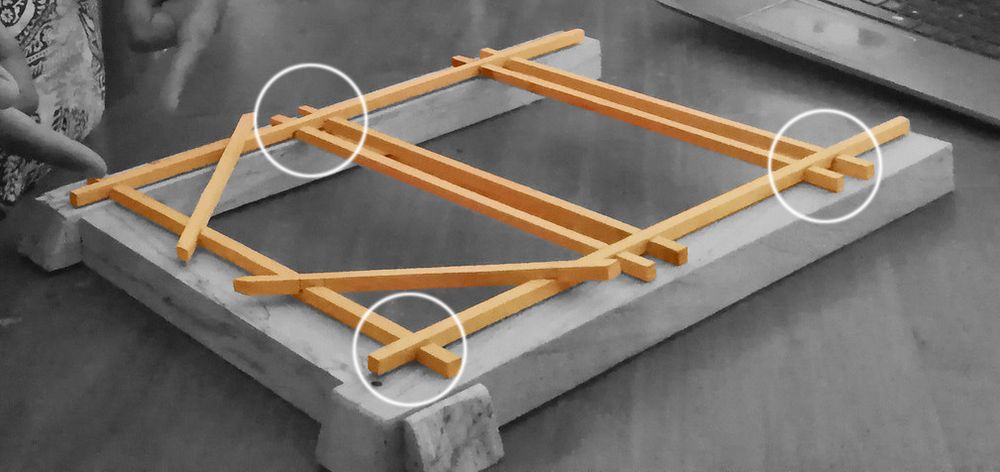
Candillijo "little oil lamp"
Zafate harpado "harpoon-shaped Safat"
Almendrilla "little almond"
Zafate "tray"
Calle "alleyway"
Moroccan names for the same shapes:
Qandīl "oil lamp"
Ṣfeṭ l-Ḥarba "spear-shaped Sfet"
Lūza "almond"
Ṣfeṭ
Zqāq "alleyway"

Candillijo "little oil lamp"
Zafate harpado "harpoon-shaped Safat"
Almendrilla "little almond"
Zafate "tray"
Calle "alleyway"
Moroccan names for the same shapes:
Qandīl "oil lamp"
Ṣfeṭ l-Ḥarba "spear-shaped Sfet"
Lūza "almond"
Ṣfeṭ
Zqāq "alleyway"
The monument’s marble paneling and two-tone decoration reflect Egyptian influences, which had already begun to spread into the Eastern Maghreb by the late 14th c.

The monument’s marble paneling and two-tone decoration reflect Egyptian influences, which had already begun to spread into the Eastern Maghreb by the late 14th c.

Above it, an inscription of a poem, written on tiles using the sgraffito technique, where parts of the glazed surface are scratched away to create a two-tone design.

Above it, an inscription of a poem, written on tiles using the sgraffito technique, where parts of the glazed surface are scratched away to create a two-tone design.
It is interesting that such a visually striking decoration was never reemployed in any other monument in Iberia or in North Africa.

It is interesting that such a visually striking decoration was never reemployed in any other monument in Iberia or in North Africa.
A green [banner] that turned the morning [light] into a sash;
It flutters like the beating heart of whoever opposes you,
Striking the souls whichever way it unfurls;
Assuring you fortune with a triumphant bearing,
So look forth to the preeminent omen of success.

A green [banner] that turned the morning [light] into a sash;
It flutters like the beating heart of whoever opposes you,
Striking the souls whichever way it unfurls;
Assuring you fortune with a triumphant bearing,
So look forth to the preeminent omen of success.
Despite the low-quality picture, the inconsistencies make me confident these doors are forgeries, possibly made during the 19th century.

Despite the low-quality picture, the inconsistencies make me confident these doors are forgeries, possibly made during the 19th century.




The word is from Andalusi Arabic with the Spanish lexicographer Pedro de Alcalá giving it as...

The word is from Andalusi Arabic with the Spanish lexicographer Pedro de Alcalá giving it as...
النصر والتمكين والفتح المبين لمولانا ابي عبد الله امير المسلمين
Victory, empowerment, and assured triumph to our lord Abi Abd Allah, the commander of the Muslims.

النصر والتمكين والفتح المبين لمولانا ابي عبد الله امير المسلمين
Victory, empowerment, and assured triumph to our lord Abi Abd Allah, the commander of the Muslims.





open.substack.com/pub/alarife/...

open.substack.com/pub/alarife/...
🧵Thread [1/13]

🧵Thread [1/13]
How likely is it that the two words are derived from a supposed Andalusi "Al-biṣāṭ"?

How likely is it that the two words are derived from a supposed Andalusi "Al-biṣāṭ"?
📸Kossay Zaoui.

📸Kossay Zaoui.

